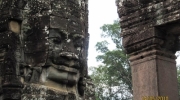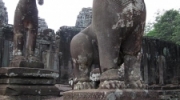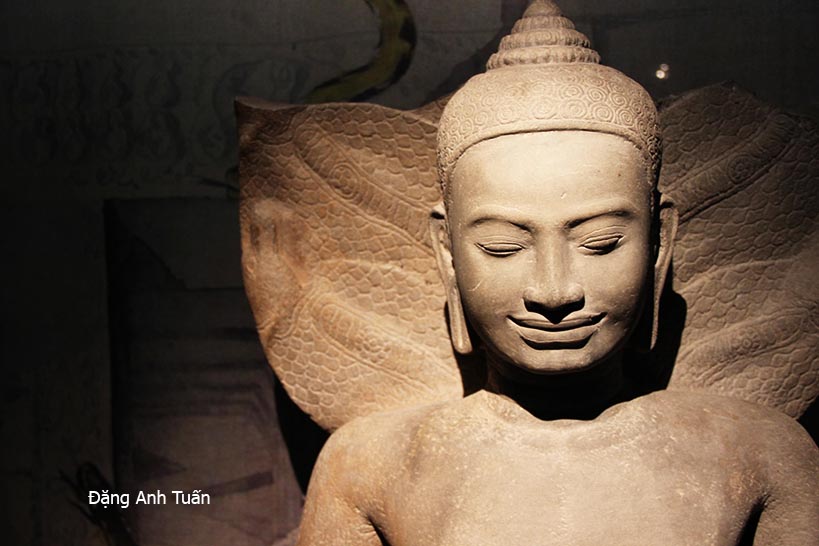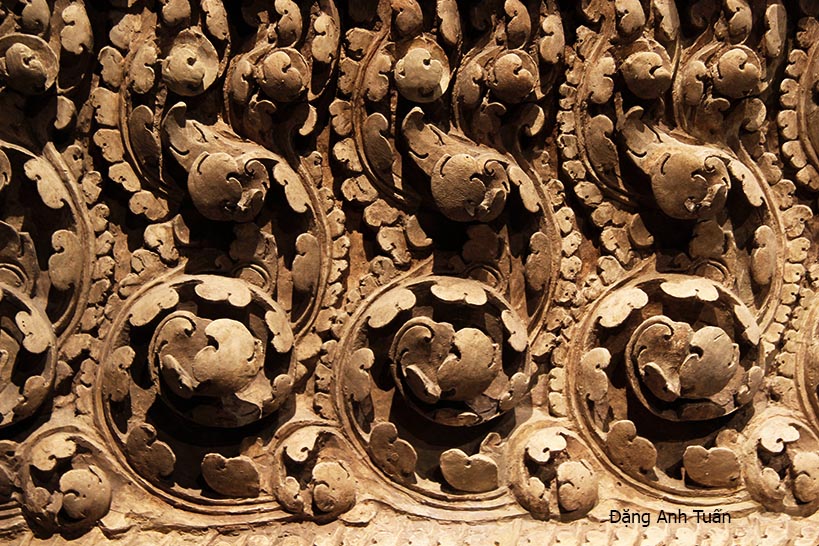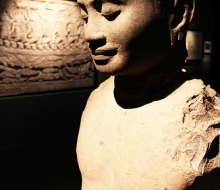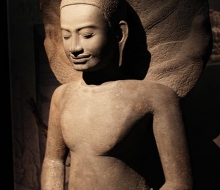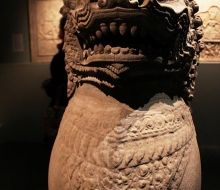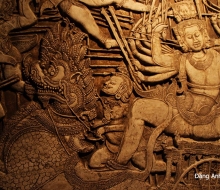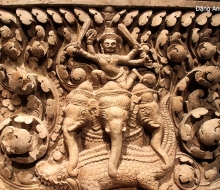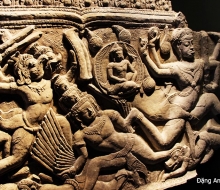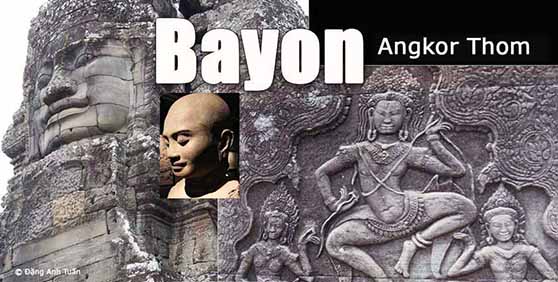
English version
Bayon est le temple central de l’ancienne ville d’Angkor Thom, capitale des souverains khmers au début du XIIIè siècle. C’est le dernier des temple-montagnes bâtis par le roi Jayavarman VII, restaurateur de puissance royale du royaume khmer d’Angkor après l’invasion des Chams. Sa décoration d’une richesse exceptionnelle est à l’apogée de l’art bouddhique mahayana. Ce roi dédie ce monument à Bouddha dont il diffuse la doctrine avec ses tours à visages. Il y a plus que 37 tours harmonieuses autour d’une grande tour centrale, le sanctuaire. mais on pense qu’elles pourraient être plus nombreuses, peut être 54 tours avec 216 visages selon Paul Mus.
Bouddha roi au musée Guimet

Ces tours sont construites par la pose des blocs de pierre empilés les uns sur les autres sans aucun ciment. La sculpture sera faite après l’achèvement de la mise en place de ces blocs rocheux. Quelle force mécanique ont- ils eu, les Cambodgiens d’autrefois, pour soulever les blocs de pierre énormes jusqu’aux parties les plus élevées de l’édifice après les avoir extrait des montagnes éloignées, les avoir polis et sculptés? C’est cette question qui a hanté fréquemment Henri Mouhot lors de la découverte des ruines d’Angkor.
On trouve sur les quatre faces de chaque tour des visages gigantesques au sourire énigmatique, chacun d’eux tourné respectivement vers l’un des quatre points cardinaux. Le visiteur a l’impression d’être suivi par leur regard glauque. Pour Pierre Loti, Bayon était la plus pesante montagne de pierres que les hommes ont osé entreprendre depuis les pyramides de Memphis.
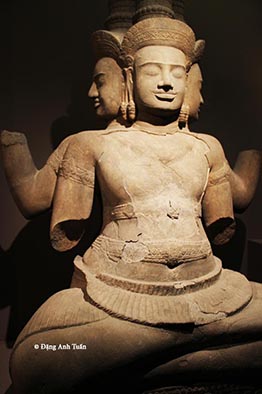
Dans son ouvrage intitulé » Voyage dans les royaumes de Siam, de Cambodge, de Laos et autres parties centrales de l’Indochine », Henri Mouhot, le découvreur des ruines d’Angkor, a laissé son impression: Malgré la disparition de l’or et des couleurs qui ont presque totalement disparu de l’édifice, il n’y reste que des pierres. Mais celles-ci proclament haut le génie, la force et la patience, le talent, la richesse et la puissance des Cambodgiens d’autrefois.
On a découvert récemment lors d’une fouille réalisée en 1933, dans les restes brisés d’une grande statue de pierre de 3,60 m de hauteur, la représentation de Jayavarman VII en bouddha roi. Le bâtisseur du Bayon est assis, les jambes repliées sur le corps lové du naga. Depuis lors, on a attribué ce visage au sourire mystique trouvé sur les faces des tours de Bayon à celui de Jayavarman VII.






